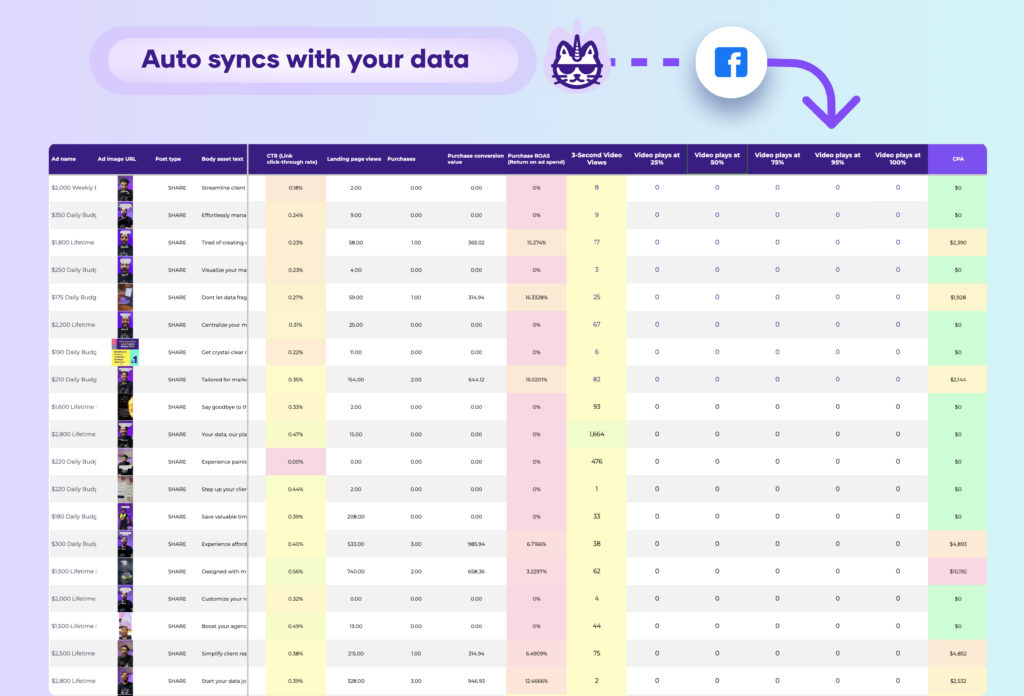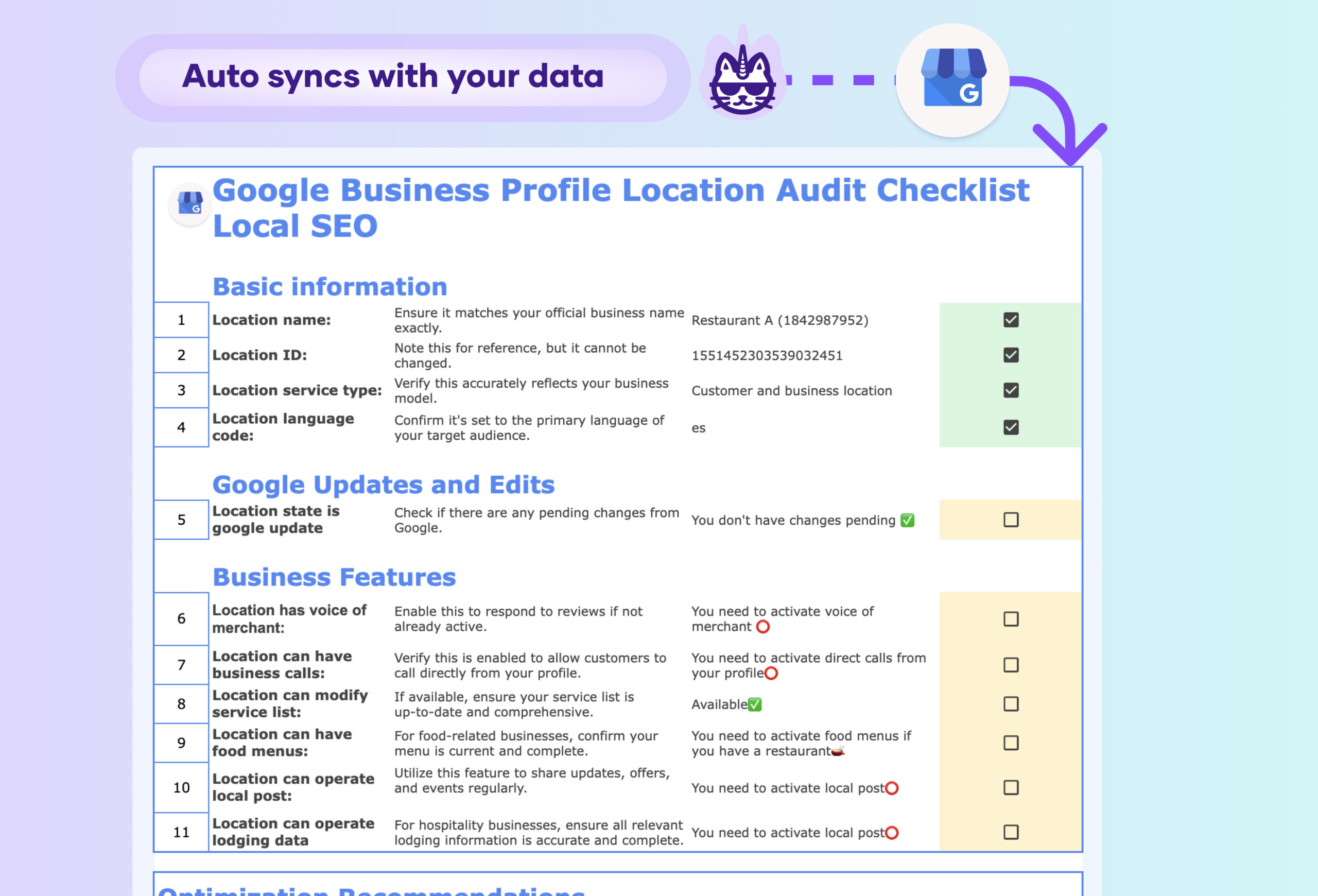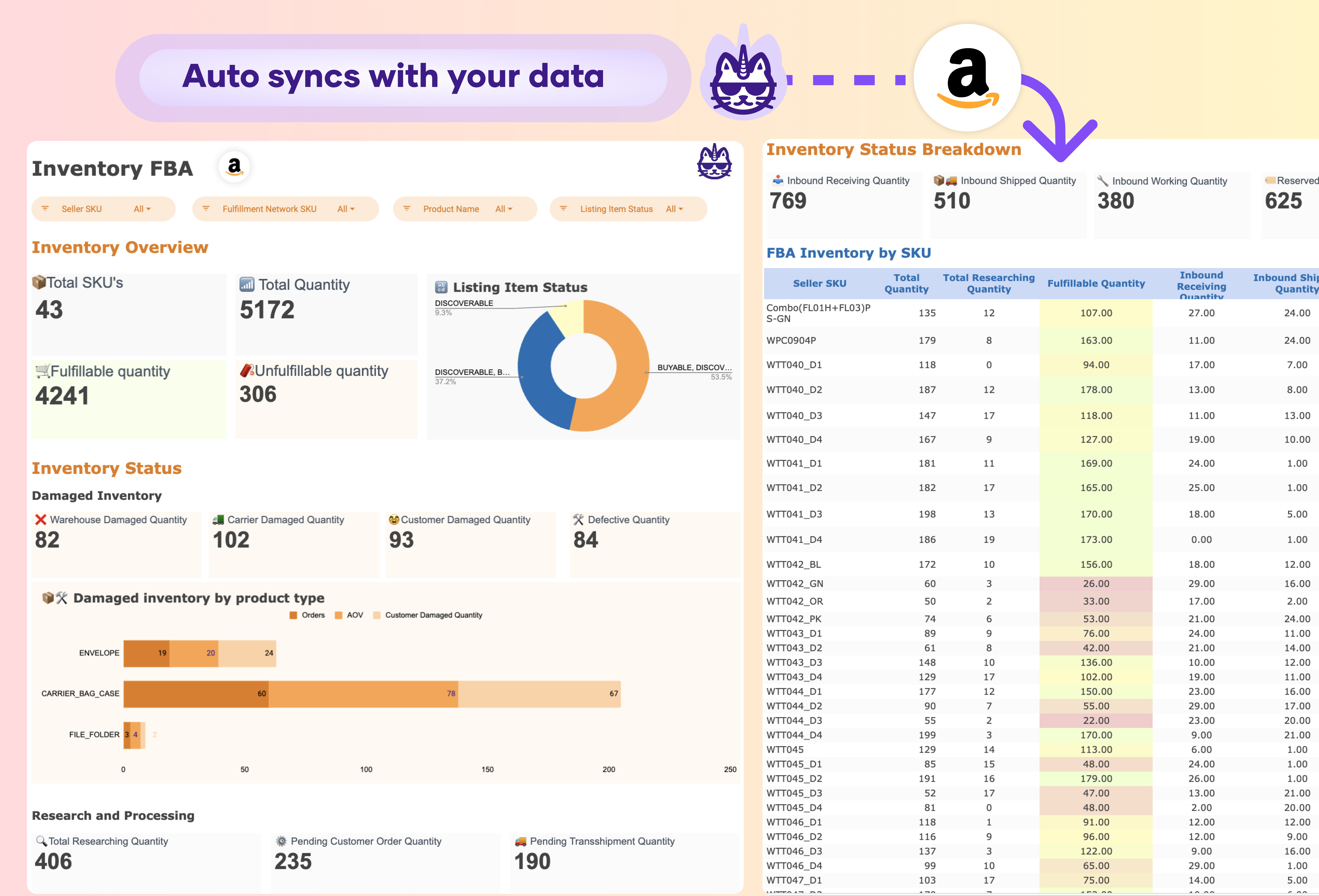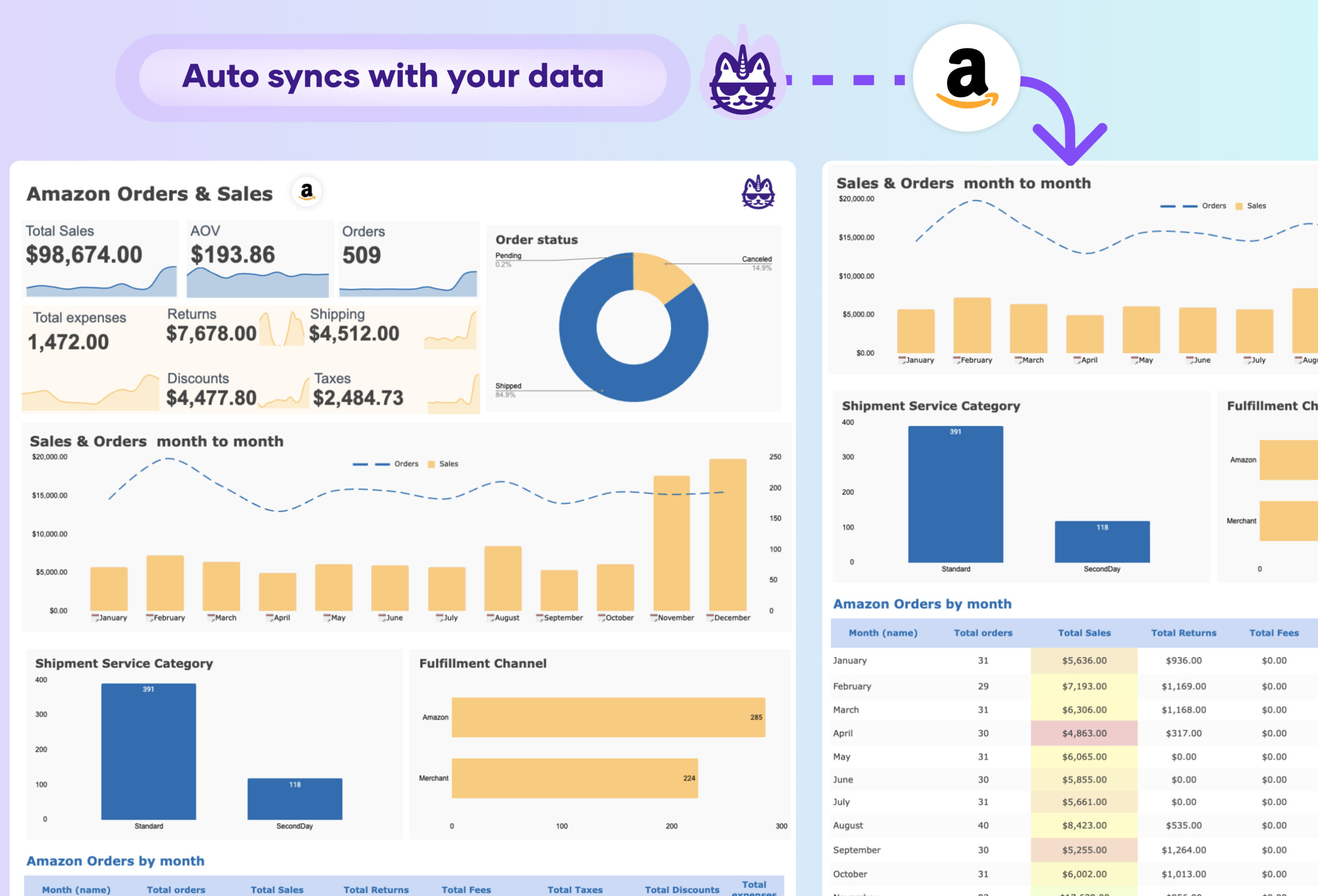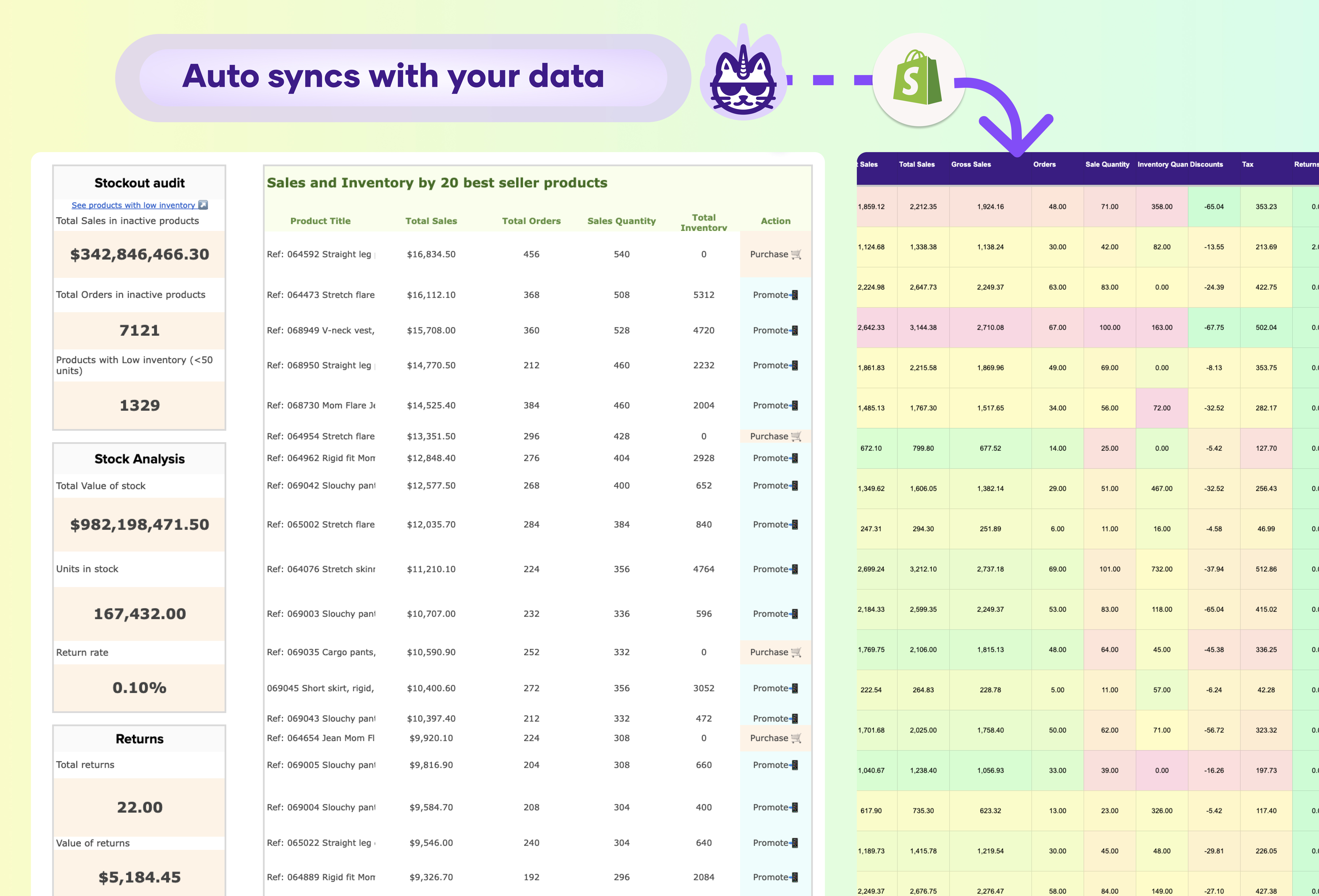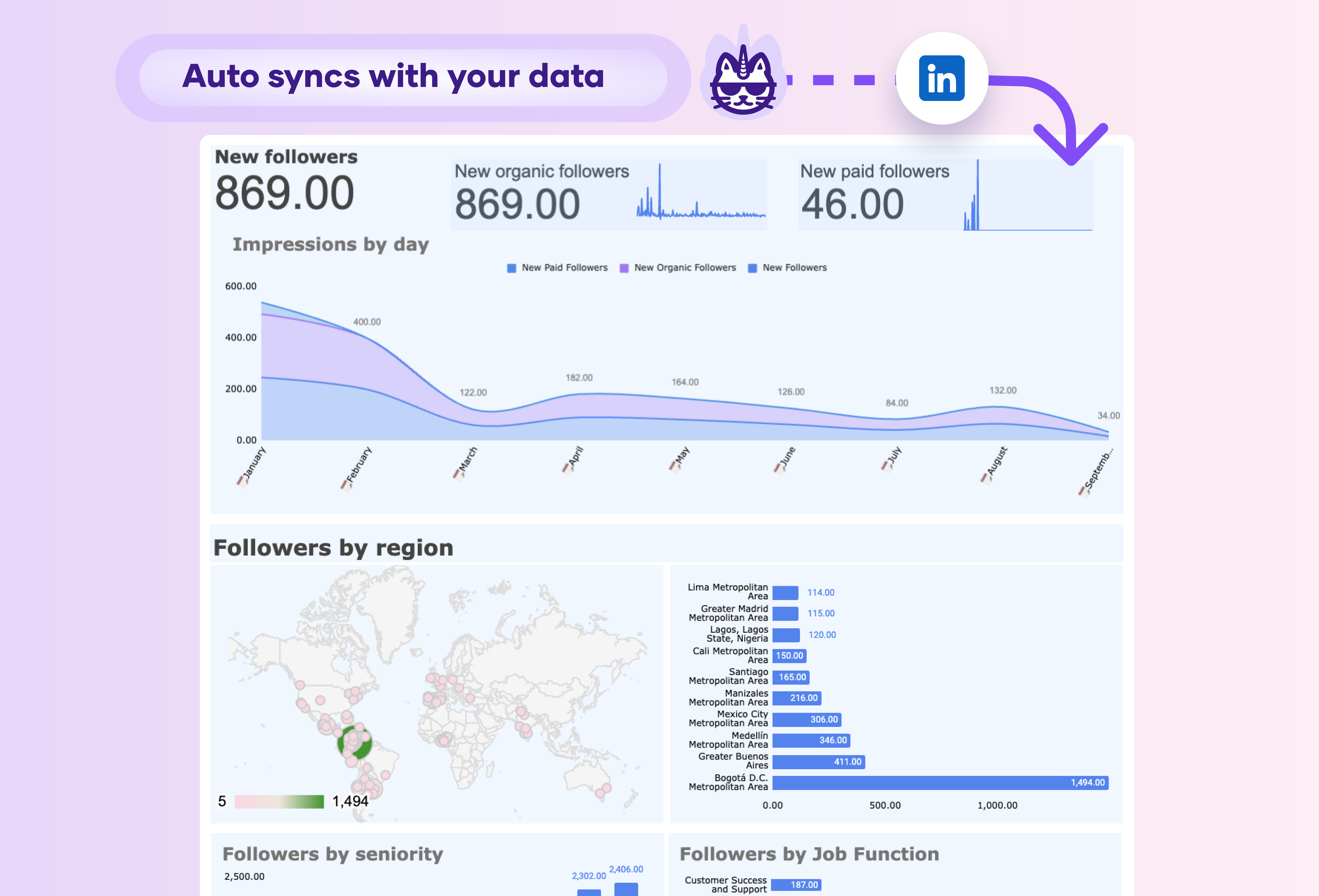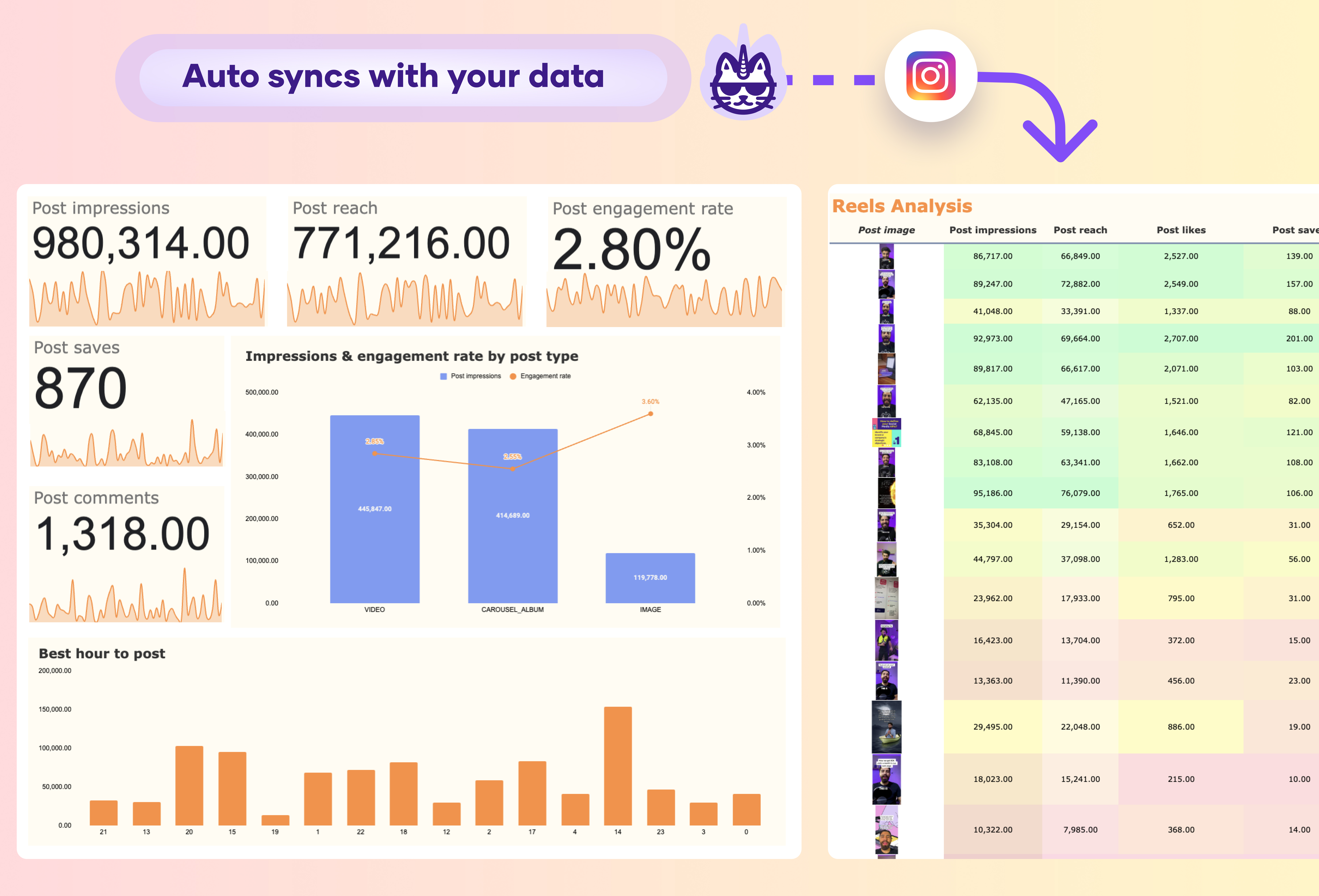You should include three levels of analysis:visibility metrics, engagement metrics, and conversion metrics,
Start by incorporating visibility metrics such as 3-second video views and video completion rates at various thresholds (25%, 50%, 75%, 95%).
Track engagement through link clicks, click-through rates (CTR), landing page views, and hook rates.
Measure conversion effectiveness with purchase data, conversion values, and return on ad spend (ROAS). Include investment metrics like cost per acquisition (CPA) and average order value (ADV). Provide performance scores (winner/loser) for CTR, ADV, and ROAS to quickly identify top-performing creatives. Ensure the dashboard allows filtering by ad name, CTR winners, ROAS winners, and hook rate. Include visual elements like color-coding and ad image previews for at-a-glance performance assessment.
To automate this report, you should consider using a data integration tool that can connect directly to the Facebook Ads API. This will allow for automatic syncing of your Facebook Ads data, ensuring real-time updates and enabling more timely optimizations to your campaigns.

